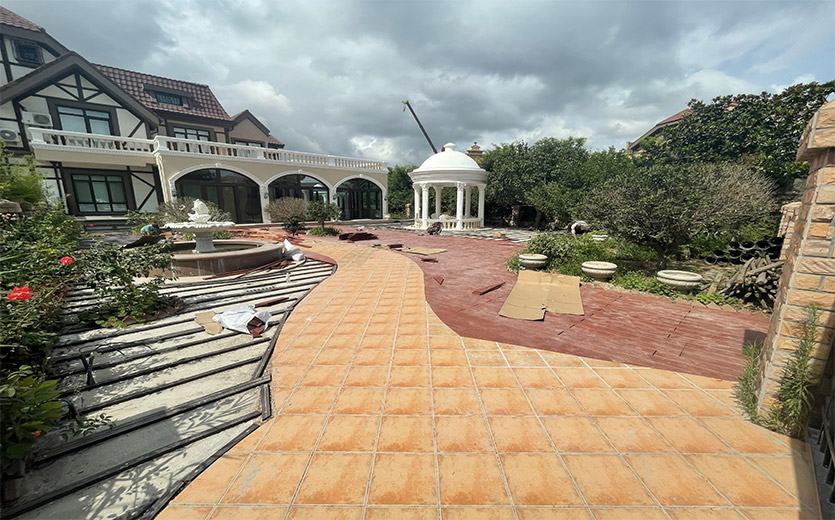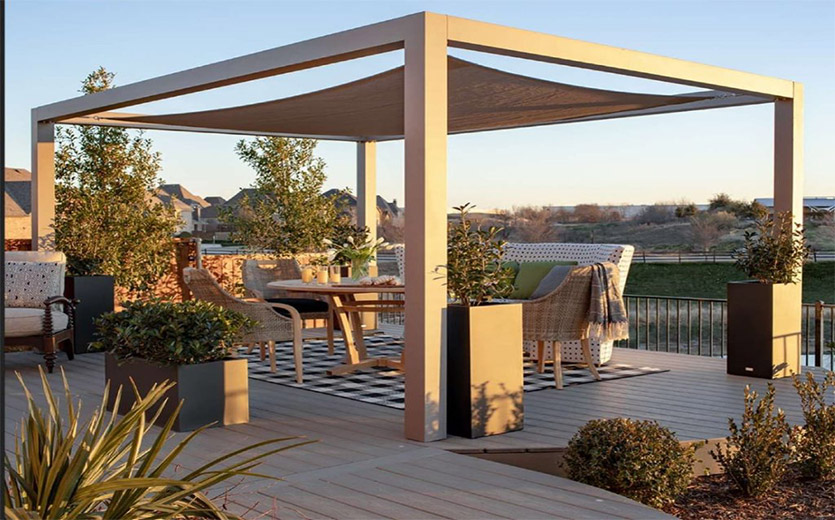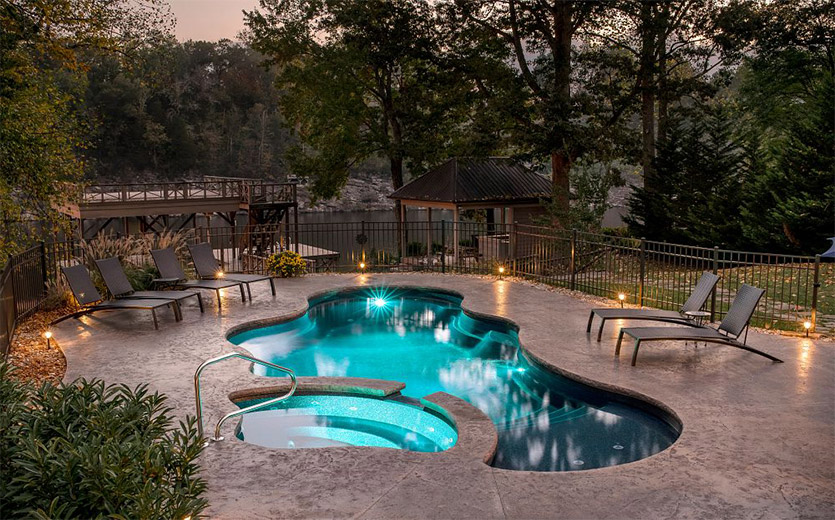
Wood-plastic composite decking is one of the most popular decks on the market today. Compared to wood floors that require regular care and maintenance. Composite decking requires little maintenance. Just clean the composite decking boards every few months.
Why is composite decking easy to clean and maintain?
The composite deck is made from a blend of recyclable plastic and wood fibers. The nature of the material dictates that it removes dirt effectively and requires little maintenance. So it’s easy to clean, and you can have the composite decking manufacturer customize the color and wood grain finish you want.
In fact, if you like the style and beauty of natural wood decking, you can achieve that with a composite deck and still not have to maintain it as often! Leaving you with more time to enjoy life.
Whether your deck is brand new or has been used for years, all decks get dirty. Dropped food, possible mold and drink stains, etc. During the winter months, you will also need to safely remove snow and ice.
How do I clean a composite deck?
You probably love your composite deck. It’s easy to install, durable and low-maintenance, and can be easily cleaned with everyday household items. You can keep it clean by cleaning it every six months during the winter and spring.
Before you start to clean your composite deck, have the following items ready.
1. A standard bottle of dishwashing detergent
2. A medium-hard nylon broom or brush
3. A mop
4. A bucket of warm water
Once you have these items, follow these six simple steps to clean your composite deck or porch floor.
1. Remove all furniture and decorations. Make sure there are no obstacles in the cleaning process, while you can thoroughly clean the entire composite deck boards.
2. Before spraying with water, sweep the floor with a broom to ensure that all loose dirt and leaves are removed.
3. After sweeping the surface, rinse the floor with warm water.
4. Prepare a mixture of warm water and detergent. The consistency is similar to the way you would wash dishes.
5. Put the mop in the bucket and start cleaning your deck! Scrub the entire floor with a soapy water solution, using good pressure to get into the grooves and remove stubborn dirt and grime.
6. After carefully scrubbing the composite decking, rinse off any remaining soap and residual dirt.
Following this cleaning process will leave your composite decking spotless! After the floor is dry, move furniture and decorations back into place.
How do I remove stubborn stains?
If the stain is unusually stubborn, this cleaning method may not remove the stain. If this happens, do not just use harsh bleach, etc. This may cause damage to the composite deck boards. Consult the deck manufacturer to see their approved list of stronger cleaners.
Composite decking manufacturers have a standard list of cleaners that you can refer to in order to clean your composite decking.
Other common questions on how to clean composite decking.
Over time, your composite decking may face other problems such as mold, food and drink stains, etc.
The following are the best ways to eliminate common problems with composite decking.
Mold and mildew
Although mold can also develop on the surface of composite decking, it does not damage the composite deck. It just adheres to the top of the composite decking, which may be mold produced after some kind of debris has fallen off.
The best way to remove mold from composite decking is to use the soapy water cleaning method mentioned earlier.
General debris
Leaves, twigs, and other items often accumulate on decks, especially if there are trees nearby. This general debris will not harm the deck, but it can become moldy if left uncleaned for a long time.
The best way to clean the deck in this case is to sweep or blow off the debris.
Dirt between the grooves of the floor
Over time, dirt can sometimes accumulate in the small grooves between the flooring. If this happens, it is also necessary to use soapy water to clean it.
If this does not remove the dirt between the boards, use a pressure washer.
Food and beverage stains
You may not believe it, but most food and drink stains, including the dreaded red wine stain, can be wiped off with dry paper towels!
If paper towels don’t remove food or drink stains from your deck, they can be removed using simple soap and water methods.
This is what sets composite materials apart from wood decks. On a wood deck, these stains can be permanent. But removing food and drink stains from composite decking is really easy!
Oil and Grease
Whether you have an outdoor kitchen or prefer to grill outdoors. Many people like to cook and prepare food on their decks. This means that some oil or grease may occasionally be left on the deck.
We should remove the grease quickly to avoid permanent staining. To remove oil and grease from composite decking, use the soapy water cleaning method. If done quickly, this will remove the oil and grease without leaving a stain.
Pollen
If there are plants near the deck, you may see a thin layer of pollen on the deck. Don’t worry, pollen will not cause long-term damage, but it should still be removed quickly.
The best way to completely remove pollen from a composite deck is to power wash your deck. We will explain more about power washing your deck below.
How do I power wash my composite decking?
One of the most common maintenance questions we get on Google for cleaning composite decking is.
“Can I power wash my composite deck?”
We can tell you, “Yes, you can – but be careful!”
When power washing your composite decking, make sure you follow these four rules.
1. Use a fan tip on the pressure washer system. This ensures that the spray does not concentrate enough to damage the deck surface.
2. When pressure washing your deck, never exceed 1,500 PSI. you don’t want to damage or scratch the beautiful deck surface.
3. Keep a safe distance between the power washer and the deck surface. We recommend maintaining a minimum distance of 6 inches from the surface. This should be enough to remove any dirt without damaging the composite decking.
4. When power washing your deck, direct the spray to match the texture. This helps prevent accidental scratching of the surface by working against the grain or across several boards.
How do I remove ice and snow from my composite decking?
While you won’t be using your deck much during the winter, you still want to composite decking and make sure it’s safe to walk on. To remove snow and ice from your composite deck, you should be careful to use the right tools and materials to avoid damaging the surface of your deck.
Can you shovel snow from a composite deck?
If you have the right shovel, you can shovel snow from composite decking without damaging the deck.
Shovels with metal edges can scratch and damage composite decking. To avoid this damage, make sure you use a shovel with a rubber edge. This will safely remove snow without scratching or damaging the deck surface.
During periods of light snow, you may not even need a shovel to clear your deck. Many homeowner brooms remove light snow less than 1-2 inches.
Can I use a snow blower?
Some homeowners have long decks. If there is a lot of snow, they may be tempted to use a walk-behind snow blower to remove the snow.
This is not a good idea! Just like a metal-edged shovel, a snowblower can cut and damage composite decking. Therefore we do not recommend using a snowblower to clear snow from above laminate flooring.
Can I use ice melt on composite decking?
Snow removal with a plastic shovel or leaf blower is very basic, but they will not remove a thin layer of ice from the deck.
Remember, you cannot use any type of metal edge or object to remove or break the ice. While this method will remove the ice, it will also damage your deck.
We recommend the use of calcium chloride ice melt, which is usually safe for composite decking. This compound is very effective at melting ice without damaging the composite surface.
We do not recommend the use of traditional sodium chloride rock salt. These particles tend to leave unsightly and permanent marks on composite decking.




Post a Comment